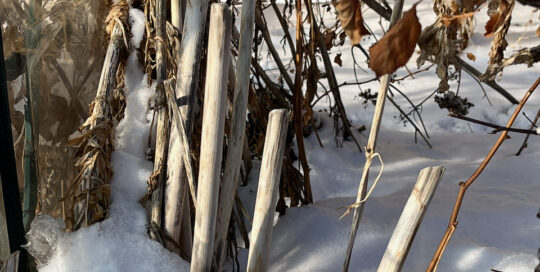Beware the Marmot
Views: 9716

If you can imagine a ground squirrel on steroids, then you have an idea of what anyone with a marmot in their backyard has to contend with.
I’ve always been kind of smug that we don’t have to deal with groundhogs here in Montana. That is, until I saw a marmot dash into a culvert in our neighborhood last week. As if the uptick in the rabbit population wasn’t enough this year, now we’re going to have to prepare for a battle with marmots.
What is a Marmot?
The species we have is the yellow bellied marmot. There’s another type, the hoary marmot, which lives in higher elevations. It is just cute and fuzzy because we don’t have to worry about them eating the garden.
We often see marmots during our sub-alpine hikes in Glacier National Park. It’s always a treat since they have fun personalities and are enjoyable to watch. I really don’t feel the same with our current resident. Mostly because I’ve seen what they do to landscapes. At one of our local golf courses, you can watch the marmots frolicking on the greens. They’re undoubtedly devouring anything edible and digging massive holes. It has to make the groundskeeper so happy.
Marmots are pretty much the western version of the groundhog. They’re slightly smaller, but still do a significant amount of damage. They give birth in the spring. My concern is that soon the one marmot we see (although he could be a male who has been booted from his natal area) will turn into a half dozen.
The one in the neighborhood seems to be a pretty wary character at the moment. The only time you catch a glimpse is driving past, and he is quick to dive under cover when the car approaches. It’s going to be interesting to see if this changes.
Preventing Damage
I have to make a plan now to handle marmots if they wander this far down the road. (When I say “this far,” I mean about 200 yards). To fence them out, I would have to put up a 4-foot-high fence that is buried at least 18 inches deep, with the end flaring outward to prevent the marmot from going underneath it.
The other option is to use a live trap and bait them in with tasty fresh offerings, such as alfalfa or lettuce. The problem there, as with anytime you trap an animal to relocate it, is where you’re going to take it. There are many areas in the country where it’s illegal to move wildlife, and even if it’s permissible, it’s often detrimental to the animal.
A third plan is a trap crop, so to speak. According to the University of Idaho Extension service, if you plant a garden bed of clover or some other desirable crop close to the marmots’ terrain, they will take advantage of this ready food source. They call it a “marmot garden.” If the marmots migrate to our end, I’ll give this a try before anything else, since I really don’t want to build a fence any higher than I already have, nor do I want to trap them.
Conclusion
Having marmots in the neighborhood just goes to show you that you can’t be too relaxed on keeping the garden safe from herbivores. Just when you think you have it covered with measures to deter deer, bunnies, and birds, here come the large, hungry squirrels.
(The photo I posted is of the yellow bellied marmots’ cousin, the hoary marmot. We saw several of them on a recent hike to Granite Park in Glacier. They’re far less camera shy as they see hundreds of people wander past every day – and I’m afraid may receive treats from some of them. The yellow bellied marmots are very similar in size and appearance, outside of a slightly different, less grizzled, coloration.)
Meet Amy Grisak
Amy is a freelance author and photographer in Great Falls, MT who specializes in gardening, foods, and sustainable agriculture. She provides information on every kind…
Amy's Recent Posts

This Little Piggy is a Problem: Dealing with Feral Hogs








